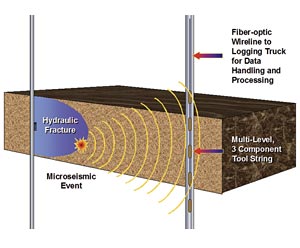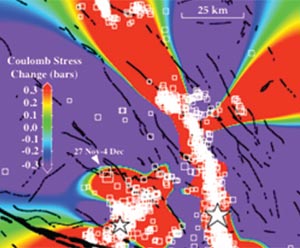Over the last several years, microseismic monitoring has evolved into the primary geophysical imaging method for hydraulic fracturing of unconventional reservoirs. Interest in the technology has also rapidly grown, and we are fortunate that Calgary has become a “hotbed” for technological development. The number and quality of microseismic presentations at the annual convention has also steadily grown, in line with rapidly growing attendance during the corresponding microseismic sessions. Indeed Professor Serge Shapiro who has long been active in microseismic, attended our Geoconvention for the first time and remarked how impressed he was with the overall quality of all aspects of the meeting in comparison to the big international symposiums. The prevalence of microseismic has led to another two RECORDER issues focusing on microseismic, with this particular issue focusing on “Case Studies and Applications of Microseismic”. It is my honor to be asked to write this introduction to the papers in this issue. I am particularly pleased with this issue’s focus on the topic of applications, because in my opinion many geophysical papers have focused primarily on technology developments at the expense of case studies. The four papers in this issue highlight a variety of different microseismic applications from understanding hydraulic fracture effectiveness, to understanding subsequent well performance and drainage to monitoring induced seismicity.
Maxwell and Parker describe “Microseismic Monitoring of Ball Drops during Hydraulic Fracturing with Sliding Sleeves”. Ball-activated sliding-sleeves are a common well construction method using different sized balls to activate sleeves targeting specific intervals or stages along a horizontal well, and the paper describes the microseismic signal characteristics corresponding to the mechanical action of sleeve. The signals from the sliding of these sleeves can be used to calibrate the velocity model, as well as to monitor the performance of the sleeves and completion and ensure fracturing in the intended interval. The paper describes four case studies of monitoring the mechanical operation of sleeves, in addition to the microseismic associated with the subsequent hydraulic fracturing in the reservoir.
“Methods to Calibrate Low-Amplitude Surface Monitoring Microseismic Results via Integration of Geology, Production Data, and Reservoir Simulation” by Sherilyn Williams-Stroud et al. describes an example of investigating a hydraulic fracture network in the Bakken. Known fracture orientations were used to populate various discrete fracture network realizations, which were further constrained by the microseismic locations and relative microseismic source strength. The discrete fracture network characteristics are converted to a relative permeability geocellular model which was then used in a reservoir simulation of the corresponding volumes of water, gas and oil estimated to be produced. The paper represents an example of a “microseismic to simulation” workflow than can be performed by upscaling the microseismic data to a permeability field to ultimately understand the corresponding reservoir drainage.
Adam Baig et al. discuss “Do Hydraulic Fractures Induce Events Large Enough to be Felt on Surface?” The question of hydraulic fracturing resulting in anomalous seismic activity has become increasing prevalent following small earthquakes associated with fracing in the UK and Oklahoma. Occasionally stress and pressure changes occurring during the injection can cause tectonically stressed faults to slip, which under certain conditions can result in a small magnitude earthquake. Closer to home, a recent report by the BC Oil and Gas Commission attributes 31 earthquakes between magnitude 2.2 and 3.8 with hydraulic fracturing in the Horn River Basin, and include recommendations to alter and potentially halt the hydraulic fracturing depending on the maximum magnitude that occurs. In this paper, Adam describes the accuracy of the estimated magnitude and associated source parameters based on the frequency bandwidth of the monitoring sensor. The spectral content of earthquakes typically goes towards lower frequencies for signals of larger magnitude events, and so typical instrumentation used to monitor relatively high frequency microseismic signals may not be ideally suited for small earthquakes. An example from an undisclosed location is also described where magnitudes up to +3 occur during a hydraulic fracture, attributed to activation of a fault below the frac well.
In the final paper John Duhault presents “Cardium Microseismic West Central Alberta: A Case Study” highlighting Petrobakken’s experience with microseismic in the Cardium formation. John reveals the progression of improved awareness of the factors controlling the hydraulic fracture geometry and ultimately production gained through microseismic mapping, starting with increasing spacing between neighbouring stages along a horizontal well to improve reservoir contact. Subsequent projects highlighted the impact of faults on the microseismic response and the production performance of the well. Later projects compared different fracing methods, and used the microseismicity to understand fracture complexity and most significantly the well production. These series of projects nicely demonstrates the progressive improvements made with fracing the Cardium wells made by leveraging the knowledge gained through this sequence of microseismic projects.















Join the Conversation
Interested in starting, or contributing to a conversation about an article or issue of the RECORDER? Join our CSEG LinkedIn Group.
Share This Article